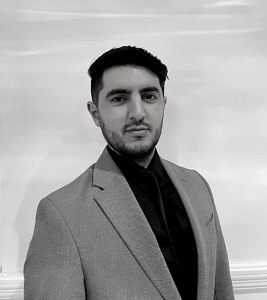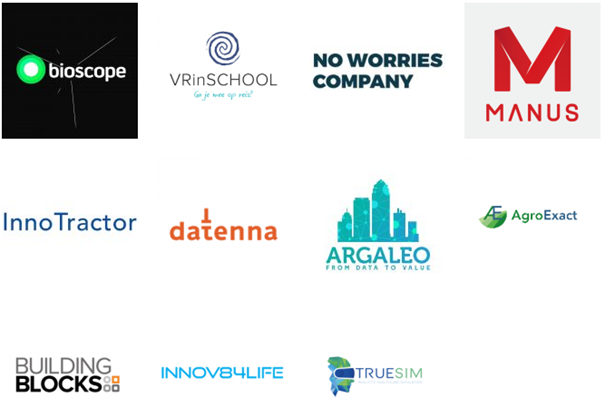Blog
Kelime açıklayıcıdır: Bu reddetmenin en yaygın nedenidir. Talep edilen kelime, talep edildiği ürün veya hizmeti veya bunların özelliklerini tanımladığında açıklayıcıdır. Örneğin, hafif bir tada sahip organik yoğurt için 'biomild' veya bebek bezleri için 'babydry'.Kelimenin ayırt edici özelliği yoktur: Örneğin bir kelime veya kelimeler ürünü veya hizmeti ayırt edemiyorsa marka olarak tescil edilemez. Örneğin, limonata şurubu için LIMO kelimesi.Kelime/logo yanıltıcı olursa: Örneğin marka altında sunulacak ürünler/hizmetler hakkında tüketicileri yanıltabilecek görsel içeren bir logo için koruma talep ediliyorsa, başvuru yapılan marka yanıltıcıdır.
Kapsamlı araştırma
Reddedilmeyi önlemek için, marka olarak başvurmak istediğiniz işaret hakkındaMaliyet
Soruşturmanın maliyeti, markanın uygulanacağı ülke sayısına ve sınıf sayısına bağlıdır.Neden BG.legal?
Marka hukuku da dahil olmak üzere fikri mülkiyet hukuku konusunda danışmanlık ve dava açma konusunda uzmanız. Markaların kullanılabilirliği konusunda araştırma yapıyoruz. Ayrıca markaları tesciol ederiz, yönetir ve izleriz. Ayrıca, itiraz ve ihlal davalarında müvekkillere yardımcı oluyoruz ve markaların devri için sözleşmeler hazırlıyoruz.Daha fazla bilgi?
Kapsamlı araştırma hakkında fazla bilgi veya başka sorularınız için benimle iletişime geçebilirsiniz. [post_title] => Marka tescil şartlar nelerdir?
[post_excerpt] =>
[post_status] => publish
[comment_status] => open
[ping_status] => open
[post_password] =>
[post_name] => marka-tescil-sartlar-nelerdir
[to_ping] =>
[pinged] =>
[post_modified] => 2022-08-31 16:34:06
[post_modified_gmt] => 2022-08-31 14:34:06
[post_content_filtered] =>
[post_parent] => 0
[guid] => https://bg.legal/?p=31894
[menu_order] => 0
[post_type] => post
[post_mime_type] =>
[comment_count] => 0
[filter] => raw
)
[1] => WP_Post Object
(
[ID] => 31892
[post_author] => 65
[post_date] => 2022-08-31 16:23:51
[post_date_gmt] => 2022-08-31 14:23:51
[post_content] =>
[post_title] => Marka tescil şartlar nelerdir?
[post_excerpt] =>
[post_status] => publish
[comment_status] => open
[ping_status] => open
[post_password] =>
[post_name] => marka-tescil-sartlar-nelerdir
[to_ping] =>
[pinged] =>
[post_modified] => 2022-08-31 16:34:06
[post_modified_gmt] => 2022-08-31 14:34:06
[post_content_filtered] =>
[post_parent] => 0
[guid] => https://bg.legal/?p=31894
[menu_order] => 0
[post_type] => post
[post_mime_type] =>
[comment_count] => 0
[filter] => raw
)
[1] => WP_Post Object
(
[ID] => 31892
[post_author] => 65
[post_date] => 2022-08-31 16:23:51
[post_date_gmt] => 2022-08-31 14:23:51
[post_content] => Neden bir kelimeyi veya logoyu marka olarak tescil ettirmelisiniz?
Bir marka tescili ile, bir marka sahibi, belirli ürünler veya hizmetler için bir marka [kelime ve/veya logo]Nerde koruma istiyorsunuz?
Yalnızca markayı tescil ettirdiğiniz yerde korumanız olur.Marka sahibinin yükümlülükleri
Bir marka, tescilden sonraki beş yıl içinde ticarette normal olarakMaliyet
Maliyetleri olabildiğince net tutmak için sabit oranlarla çalışıyoruz. Maliyetler, bir marka için başvurulan alan ve sınıf sayısına bağlıdır.Neden BG.legal?
Marka hukuku da dahil olmak üzere fikri mülkiyet hukuku konusunda danışmanlık ve dava açma konusunda uzmanız. Markaların kullanılabilirliği konusunda araştırma yapıyoruz. Ayrıca markaları kaydeder, yönetir ve izleriz. Ayrıca, itiraz ve ihlal davalarında müvekkillere yardımcı oluyoruz ve markaların devri için sözleşmeler hazırlıyoruz.
Marka başvurusu yaparken başvuruyu hazırlayacağız, aynı kelime işaretini araştıracağız ve size markanın sertifikasını göndereceğiz.
Daha fazla bilgi?
Marka başvuruları ve maliyetleri hakkında daha fazla bilgi veya diğer sorularınız için [post_title] => Neden bir kelimeyi veya logoyu marka olarak tescil ettirmelisiniz?
[post_excerpt] =>
[post_status] => publish
[comment_status] => open
[ping_status] => open
[post_password] =>
[post_name] => neden-bir-kelimeyi-veya-logoyu-marka-olarak-tescil-ettirmelisiniz
[to_ping] =>
[pinged] =>
[post_modified] => 2022-08-31 16:33:31
[post_modified_gmt] => 2022-08-31 14:33:31
[post_content_filtered] =>
[post_parent] => 0
[guid] => https://bg.legal/?p=31892
[menu_order] => 0
[post_type] => post
[post_mime_type] =>
[comment_count] => 0
[filter] => raw
)
[2] => WP_Post Object
(
[ID] => 31891
[post_author] => 65
[post_date] => 2022-08-31 16:21:54
[post_date_gmt] => 2022-08-31 14:21:54
[post_content] => With a trademark registration, a trademark owner acquires the exclusive right to use a trademark [word and/or logo] for certain products or services.
[post_title] => Neden bir kelimeyi veya logoyu marka olarak tescil ettirmelisiniz?
[post_excerpt] =>
[post_status] => publish
[comment_status] => open
[ping_status] => open
[post_password] =>
[post_name] => neden-bir-kelimeyi-veya-logoyu-marka-olarak-tescil-ettirmelisiniz
[to_ping] =>
[pinged] =>
[post_modified] => 2022-08-31 16:33:31
[post_modified_gmt] => 2022-08-31 14:33:31
[post_content_filtered] =>
[post_parent] => 0
[guid] => https://bg.legal/?p=31892
[menu_order] => 0
[post_type] => post
[post_mime_type] =>
[comment_count] => 0
[filter] => raw
)
[2] => WP_Post Object
(
[ID] => 31891
[post_author] => 65
[post_date] => 2022-08-31 16:21:54
[post_date_gmt] => 2022-08-31 14:21:54
[post_content] => With a trademark registration, a trademark owner acquires the exclusive right to use a trademark [word and/or logo] for certain products or services.
Where do you want protection?
You only haveObligations of the trademark owner
A trademark must be normal used in commerce within five years of the registration. Therefore, a trademark can also beWhy BG.legal?
We specialize in advising and litigation in intellectual property law, including trademark law. We are doing research on the usability of trademarks. We also register, manage and track trademarks. We also assist clients in objection and infringement lawsuits and draft contracts for the transfer of trademarks. When applying for a trademark, we will prepare the application, search for the same word mark and send you the certificate of the trademark.Costs
We work with fixed rates to keep costs as clear as possible. The costs depend on the number of fields and classes applied for in a trademark application.More information?
For more information, please contact one of our IP specialists. Click here for the Turkish version. [post_title] => Why should you register a word or logo as a trademark?
[post_excerpt] =>
[post_status] => publish
[comment_status] => open
[ping_status] => open
[post_password] =>
[post_name] => why-should-you-register-a-word-or-logo-as-a-trademark
[to_ping] =>
[pinged] =>
[post_modified] => 2022-08-31 16:24:17
[post_modified_gmt] => 2022-08-31 14:24:17
[post_content_filtered] =>
[post_parent] => 0
[guid] => https://bg.legal/?p=31891
[menu_order] => 0
[post_type] => post
[post_mime_type] =>
[comment_count] => 0
[filter] => raw
)
[3] => WP_Post Object
(
[ID] => 31579
[post_author] => 6
[post_date] => 2022-08-08 16:34:37
[post_date_gmt] => 2022-08-08 14:34:37
[post_content] => Deadly diseases still exist to this day and they need to be addressed. Thus, we have to predict, prevent and respond to the outbreak of deadly viruses like COVID-19.
[post_title] => Why should you register a word or logo as a trademark?
[post_excerpt] =>
[post_status] => publish
[comment_status] => open
[ping_status] => open
[post_password] =>
[post_name] => why-should-you-register-a-word-or-logo-as-a-trademark
[to_ping] =>
[pinged] =>
[post_modified] => 2022-08-31 16:24:17
[post_modified_gmt] => 2022-08-31 14:24:17
[post_content_filtered] =>
[post_parent] => 0
[guid] => https://bg.legal/?p=31891
[menu_order] => 0
[post_type] => post
[post_mime_type] =>
[comment_count] => 0
[filter] => raw
)
[3] => WP_Post Object
(
[ID] => 31579
[post_author] => 6
[post_date] => 2022-08-08 16:34:37
[post_date_gmt] => 2022-08-08 14:34:37
[post_content] => Deadly diseases still exist to this day and they need to be addressed. Thus, we have to predict, prevent and respond to the outbreak of deadly viruses like COVID-19. Regulatory challenges
The International Coalition of Medicines Regulatory Authorities (ICMRA) has made a report of a horizontal scanning exercise in AI.[1] In order to examine the challenges the use of AI poses to global medicine regulation, two hypothetical case studies were developed. a. AI in clinical medicine development and use: A Central Nervous System App- Regulators need to take into consideration the context of use of the AI system and its software and algorithm(s);
- Validation may require access to the underlying algorithm and datasets by regulators;
- Updates to the AI software or hardware would need re-testing or bridging studies to ensure reproducibility/validation.
- The challenge lies in creating the right balance between AI and human oversight of signal detection and management;
- AI use may discover safety signals that are more difficult to detect with current methods;
- Software updates that affect the data will need to be communicated to regulators.
Recommendations:
- The validation will require access to the employed algorithms and underlying datasets. Legal and regulatory frameworks may need to be adapted to ensure such access options.
- Consider the concept of a Qualified Person responsible for AI/algorithm(s) oversight compliance.
Legal challenges
- Regulatory status of AI/ML software
- Black box: explainable AI
- Securing data against cyber attacks
1. Algorithm
In most cases theLegal issues:
- IP related to the software/data sets used to develop and train the algorithm.
- IP related to AI and the outcome of the AI system (who has rights to the newly structured data, the correlations derived from the data, the compounds discovered).
- Exit rights: can the pharmaceutical company transfer the algorithm/data to another data science company.
- If the data science company may use the knowhow for other customers.
- Liability for the outcome of the AI system.
- Non-performance of the AI system.
- Explainable XAI: black box prediction model.
2. Dataset
There is a rapid growth in all kind ofLegal issues:
- Privacy: does the dataset contain personal (health) data
- Quality of the dataset used is bias
- Data sharing: conditions for data sharing
- IP related to the data set
- IP related to the AI system
- Liability for the outcome of the AI system
Contact
For more information in relation to AI in pharma, contact Jos van der Wijst. [1] ICMRA, Informal Innovation Network, Horizon Scanning Assessment Report – Artificial Intelligence, 6 August 2021 [post_title] => AI in Pharma
[post_excerpt] =>
[post_status] => publish
[comment_status] => open
[ping_status] => open
[post_password] =>
[post_name] => ai-in-pharma
[to_ping] =>
[pinged] =>
[post_modified] => 2022-08-08 16:44:40
[post_modified_gmt] => 2022-08-08 14:44:40
[post_content_filtered] =>
[post_parent] => 0
[guid] => https://bg.legal/?p=31579
[menu_order] => 0
[post_type] => post
[post_mime_type] =>
[comment_count] => 0
[filter] => raw
)
[4] => WP_Post Object
(
[ID] => 31582
[post_author] => 6
[post_date] => 2022-08-08 16:31:46
[post_date_gmt] => 2022-08-08 14:31:46
[post_content] => The European Commission has proposed a legal framework on Artificial Intelligence (‘AI’). This AI Act proposes a risk based approach with clear requirements and obligations regarding specific uses of
[post_title] => AI in Pharma
[post_excerpt] =>
[post_status] => publish
[comment_status] => open
[ping_status] => open
[post_password] =>
[post_name] => ai-in-pharma
[to_ping] =>
[pinged] =>
[post_modified] => 2022-08-08 16:44:40
[post_modified_gmt] => 2022-08-08 14:44:40
[post_content_filtered] =>
[post_parent] => 0
[guid] => https://bg.legal/?p=31579
[menu_order] => 0
[post_type] => post
[post_mime_type] =>
[comment_count] => 0
[filter] => raw
)
[4] => WP_Post Object
(
[ID] => 31582
[post_author] => 6
[post_date] => 2022-08-08 16:31:46
[post_date_gmt] => 2022-08-08 14:31:46
[post_content] => The European Commission has proposed a legal framework on Artificial Intelligence (‘AI’). This AI Act proposes a risk based approach with clear requirements and obligations regarding specific uses of - Adequate risk assessment and mitigation systems;
- High quality of the datasets feeding the system to minimize risks and discriminatory outcomes;
- Logging of activity to ensure traceability of results;
- Detailed documentation providing all information necessary to the system and its purpose for authorities to assess its compliance;
- Clear and adequate information to the user;
- Appropriate human oversight measures to minimize risk;
- High level of robustness, security and accuracy.
-
- Bias in training data may lead to discrimination and individual injury/death (i.e., racial bias may lead to incorrect diagnoses) and deepen existing socio-economic inequalities;
- Technical system errors in AI could lead to mass patient injuries because of widespread use; Increased use and sharing of health data threatens privacy and data protection rights of patients;
- Lack of transparency and explainability threatens patients’ rights to information and to informed consent to medical treatment;
- Issues with cybersecurity threaten patients’ health in the case of cyberattacks on for example insulin pumps and pacemakers.
AI regulatory sandbox
The proposal for the AI Act also introduces the instrument of the- Early involvement of the regulator (aim of mutual learning and adaptation)
- Faster adaptation of current regulations to suit the new product or service.
Contact
For more information in relation to (legal aspects of) AI, please contact Jos van der Wijst. [1] ICMRA, Informal Innovation Network, Horizon Scanning Assessment Report – Artificial Intelligence, 6 August 2021 [2] https://haiweb.org/prioritise-health-in-the-artificial-intelligence-act [post_title] => AI Act and Pharma / Health
[post_excerpt] =>
[post_status] => publish
[comment_status] => open
[ping_status] => open
[post_password] =>
[post_name] => ai-act-and-pharma-health
[to_ping] =>
[pinged] =>
[post_modified] => 2022-08-08 16:37:32
[post_modified_gmt] => 2022-08-08 14:37:32
[post_content_filtered] =>
[post_parent] => 0
[guid] => https://bg.legal/?p=31582
[menu_order] => 0
[post_type] => post
[post_mime_type] =>
[comment_count] => 0
[filter] => raw
)
[5] => WP_Post Object
(
[ID] => 31410
[post_author] => 68
[post_date] => 2022-07-27 11:09:03
[post_date_gmt] => 2022-07-27 09:09:03
[post_content] => It has become lucrative for businesses to generate revenue through sourcing and purchasing goods elsewhere. However, these businesses must also be aware of the accompanying risks in doing so. If the purchased goods constitute an infringement of intellectual property rights of a third party, the purchaser could be held liable for the damages resulting from this infringement. In a recent case, this issue is addressed by the court of appeal (hereinafter: the Court) in the Hague. This blog post discusses this particular case and more specifically what a purchasing company could do in order to guard itself against liability in case an
[post_title] => AI Act and Pharma / Health
[post_excerpt] =>
[post_status] => publish
[comment_status] => open
[ping_status] => open
[post_password] =>
[post_name] => ai-act-and-pharma-health
[to_ping] =>
[pinged] =>
[post_modified] => 2022-08-08 16:37:32
[post_modified_gmt] => 2022-08-08 14:37:32
[post_content_filtered] =>
[post_parent] => 0
[guid] => https://bg.legal/?p=31582
[menu_order] => 0
[post_type] => post
[post_mime_type] =>
[comment_count] => 0
[filter] => raw
)
[5] => WP_Post Object
(
[ID] => 31410
[post_author] => 68
[post_date] => 2022-07-27 11:09:03
[post_date_gmt] => 2022-07-27 09:09:03
[post_content] => It has become lucrative for businesses to generate revenue through sourcing and purchasing goods elsewhere. However, these businesses must also be aware of the accompanying risks in doing so. If the purchased goods constitute an infringement of intellectual property rights of a third party, the purchaser could be held liable for the damages resulting from this infringement. In a recent case, this issue is addressed by the court of appeal (hereinafter: the Court) in the Hague. This blog post discusses this particular case and more specifically what a purchasing company could do in order to guard itself against liability in case an Case facts
Van Caem Sports (hereinafter: VCS) is a store specializing in sports goods. In 2013 VCS purchased Converse shoes from EN-S Sports (hereinafter: EN-S) twice. Subsequently, Converse sued VCS for trademark infringement and ordered VCS to pay the damages for the sale of the infringing shoes. The issue in the present case was whether the infringing shoes were supplied by EN-S and whether EN-S is obligated to indemnify VCS for the damages it must pay as a result ofThe Court’s decision
This time around, the Court held that VCS had succeeded in proving that the shoes originated from EN-S. The trademark infringement in the main case was not based on the fact that the shoes were counterfeit, but on the fact that the shoes had not been marketed by Converse in the EEA. As a result, the question of whether the shoes were counterfeit was not of relevance. Since the Court was of the opinion that no exhaustion of trademark rights had taken place, the shoes were not freely marketable in the EEA. Moreover, the Court ruled that EN-S is obliged to indemnify VCS on the basis of the indemnification statement and a closed chain of administration. As EN-S could not further invoke VCS's own fault or estoppel, the Court was of the opinion that the claims of VCS are admissible if EN-S does not succeed inConclusion
This case clearly shows that it is of utmost importance that a purchasing party is able to provide evidence that the infringing goods seized are the same goods sold and delivered by the contracting party. In the present case, the Court ought the indemnification statement including a lawyer’s letter and a closed chain administration to be sufficient as evidence. At BG.legal we can help you gather this evidence by, inter alia, drafting an indemnification statement including a lawyer's letter as well as assisting in the establishment of a closed chain of administration. If you have any questions regarding [post_title] => Indemnification and IP infringement: a matter regarding shoes
[post_excerpt] =>
[post_status] => publish
[comment_status] => open
[ping_status] => open
[post_password] =>
[post_name] => indemnification-and-ip-infringement-a-matter-regarding-shoes
[to_ping] =>
[pinged] =>
[post_modified] => 2022-07-27 11:10:14
[post_modified_gmt] => 2022-07-27 09:10:14
[post_content_filtered] =>
[post_parent] => 0
[guid] => https://bg.legal/?p=31410
[menu_order] => 0
[post_type] => post
[post_mime_type] =>
[comment_count] => 0
[filter] => raw
)
[6] => WP_Post Object
(
[ID] => 30442
[post_author] => 78
[post_date] => 2022-06-01 09:31:11
[post_date_gmt] => 2022-06-01 07:31:11
[post_content] =>
[post_title] => Indemnification and IP infringement: a matter regarding shoes
[post_excerpt] =>
[post_status] => publish
[comment_status] => open
[ping_status] => open
[post_password] =>
[post_name] => indemnification-and-ip-infringement-a-matter-regarding-shoes
[to_ping] =>
[pinged] =>
[post_modified] => 2022-07-27 11:10:14
[post_modified_gmt] => 2022-07-27 09:10:14
[post_content_filtered] =>
[post_parent] => 0
[guid] => https://bg.legal/?p=31410
[menu_order] => 0
[post_type] => post
[post_mime_type] =>
[comment_count] => 0
[filter] => raw
)
[6] => WP_Post Object
(
[ID] => 30442
[post_author] => 78
[post_date] => 2022-06-01 09:31:11
[post_date_gmt] => 2022-06-01 07:31:11
[post_content] => When processing personal data, the controller must adhere at all times to the principle of transparency. In practice, this means that data subjects should be adequately informed about the different processing activities that might take place using their personal data. More often than not, this information is provided by means of a privacy policy. In this blog by Stan Elsendoorn, we shall take a closer look at the specific information that needs to be provided, as well as the core values that need to be taken into account when drawing up a privacy policy.
General requirements
Article 12 of the GDPR lists several requirements that should be kept in mind when writing a privacy policy. Each of these requirements shall be further explained below. I. Concise, transparent, intelligible and in an easily accessible format The information needs to be presented/communicated efficiently in order to avoid information fatigue, whilst also being intelligible, meaning that the information isNecessary information
In addition to the aforementioned requirements, the following information – depending on the manner in which the personal data were obtained – should also be included when drawing up a privacy policy Necessary information when the personal data is directly provided by the data subject (article 13 GDPR) I. The identity and contact details of the controller; II. (Where applicable) the contact details of the data protection officer; III. The purpose and legal basis for the processing; IV. (Where applicable) if the legal basis for the processing is a legitimate interest of the Controller, a description of said interests; V. (Where applicable) the (categories of the) recipients of the personal data; VI. (Where applicable) if the controller intends to transfer the personal data to a recipient in a third country for which the EU has not (yet) adopted an adequacy decision, the appropriate and/or suitable safeguards taken; VII. The (criteria to determine the) period for which the personal data will be stored; VIII. Information on the existence of data subject’s rights, including the right to request access, rectification or erasure of the personal data, the right to restrict or object to the processing of personal data as well ass the right to data portability; IX. (Where applicable) if the legal basis for the processing activities is the consent of the data subject, the existence of the right to withdraw said consent at any given time; X. The right to lodge a complaint with the supervisory authority; XI. Whether the provision of personal data is part of a statutory or contractual requirement or obligation and the possible consequences of failing to provide the personal data; XII. (Where applicable) Information on the existence of an automated decision-making system, including profiling, including meaningful information about the logic involved, the significance as well as the consequences that the system’s automated decision-making might entail for (the rights of) the data subject. Obtained from third parties or other sources (article 14 GDPR) When the personal data are obtained from third parties or different sources, the privacy noticeConclusion
There are a lot of things to keep in mind when drawing up a privacy policy. One should not only take into account the aforementionedCase facts
Questions for a preliminary ruling:
‘Is- Imposes on the applicant in civil proceedings for cancellation of a national registered trade mark on the ground of revocation for non-use a burden of setting out the facts, as distinguished from the burden of proof, and
- Requires the applicant, in the context of that burden of setting out the facts,
- To make, in such proceedings, substantiated submissions regarding the defendant’s non-use of the trade mark, to the extent that it is possible for the applicant to do so; and
- to carry out, for that purpose, its own research into the market, in a manner which is appropriate to the request for cancellation and to the specific nature of the trade mark concerned?’
Ruling by the CJEU
TheConclusion
 [post_title] => Burden of proving genuine use
[post_excerpt] =>
[post_status] => publish
[comment_status] => open
[ping_status] => open
[post_password] =>
[post_name] => burden-of-proving-genuine-use
[to_ping] =>
[pinged] =>
[post_modified] => 2022-04-07 13:35:12
[post_modified_gmt] => 2022-04-07 11:35:12
[post_content_filtered] =>
[post_parent] => 0
[guid] => https://bg.legal/?p=29884
[menu_order] => 0
[post_type] => post
[post_mime_type] =>
[comment_count] => 0
[filter] => raw
)
[8] => WP_Post Object
(
[ID] => 29548
[post_author] => 65
[post_date] => 2022-03-15 10:57:59
[post_date_gmt] => 2022-03-15 09:57:59
[post_content] =>
[post_title] => Burden of proving genuine use
[post_excerpt] =>
[post_status] => publish
[comment_status] => open
[ping_status] => open
[post_password] =>
[post_name] => burden-of-proving-genuine-use
[to_ping] =>
[pinged] =>
[post_modified] => 2022-04-07 13:35:12
[post_modified_gmt] => 2022-04-07 11:35:12
[post_content_filtered] =>
[post_parent] => 0
[guid] => https://bg.legal/?p=29884
[menu_order] => 0
[post_type] => post
[post_mime_type] =>
[comment_count] => 0
[filter] => raw
)
[8] => WP_Post Object
(
[ID] => 29548
[post_author] => 65
[post_date] => 2022-03-15 10:57:59
[post_date_gmt] => 2022-03-15 09:57:59
[post_content] => What is data?
The value of many companies lies more and more in the large amount of- Ownership of data;
- Protecting data;
- Data sharing;
- Data and ethics;
- Privacy;
- Software as a Service (SaaS);
- Data as a Service (DaaS)
Knowledge from practice
 BG.legal is a member of the NL AI Coalition and NVAIR (Dutch Association for AI and Robotics Law)
BG.legal is a member of the NL AI Coalition and NVAIR (Dutch Association for AI and Robotics Law)
 [post_title] => Data
[post_excerpt] =>
[post_status] => publish
[comment_status] => open
[ping_status] => open
[post_password] =>
[post_name] => data
[to_ping] =>
[pinged] =>
[post_modified] => 2022-03-15 10:57:59
[post_modified_gmt] => 2022-03-15 09:57:59
[post_content_filtered] =>
[post_parent] => 0
[guid] => https://bg.legal/?p=29548
[menu_order] => 0
[post_type] => post
[post_mime_type] =>
[comment_count] => 0
[filter] => raw
)
[9] => WP_Post Object
(
[ID] => 29546
[post_author] => 6
[post_date] => 2022-03-14 10:50:11
[post_date_gmt] => 2022-03-14 09:50:11
[post_content] => The European Commission has published a draft
[post_title] => Data
[post_excerpt] =>
[post_status] => publish
[comment_status] => open
[ping_status] => open
[post_password] =>
[post_name] => data
[to_ping] =>
[pinged] =>
[post_modified] => 2022-03-15 10:57:59
[post_modified_gmt] => 2022-03-15 09:57:59
[post_content_filtered] =>
[post_parent] => 0
[guid] => https://bg.legal/?p=29548
[menu_order] => 0
[post_type] => post
[post_mime_type] =>
[comment_count] => 0
[filter] => raw
)
[9] => WP_Post Object
(
[ID] => 29546
[post_author] => 6
[post_date] => 2022-03-14 10:50:11
[post_date_gmt] => 2022-03-14 09:50:11
[post_content] => The European Commission has published a draft - Medical Devices Regulation: for AI applications in medical devices
- Constitution + Human Rights Treaties: for protection of fundamental rights such as speech, privacy, self-determination.
- General Data Protection Regulation: when processing personal data
- Product safety regulations: when an AI application causes injury
- Consumer protection: when information obligations arise from these regulations
- Codes of conduct: when a sector lays down rules (code of conduct) for AI applications
- Contracts: when parties have agreed on rules for AI applications in an agreement
AI compliance assessment
Therefore, it is wise for bothMarka tescil şartlar nelerdir?
Marka tescil başvurusunu değerlendiren kuruluş, bir kelime veya logonun temel kriterleri karşılayıp karşılamadığını kontrol etmektedir. Aksi takdirde, bir başvuru reddedilecektir. ReddedilmeninKelime açıklayıcıdır: Bu reddetmenin en yaygın nedenidir. Talep edilen kelime, talep edildiği ürün veya hizmeti veya bunların özelliklerini tanımladığında açıklayıcıdır. Örneğin, hafif bir tada sahip organik yoğurt için 'biomild' veya bebek bezleri için 'babydry'.Kelimenin ayırt edici özelliği yoktur: Örneğin bir kelime veya kelimeler ürünü veya hizmeti ayırt edemiyorsa marka olarak tescil edilemez. Örneğin, limonata şurubu için LIMO kelimesi.Kelime/logo yanıltıcı olursa: Örneğin marka altında sunulacak ürünler/hizmetler hakkında tüketicileri yanıltabilecek görsel içeren bir logo için koruma talep ediliyorsa, başvuru yapılan marka yanıltıcıdır.
Kapsamlı araştırma
Reddedilmeyi önlemek için, marka olarak başvurmak istediğiniz işaret hakkındaMaliyet
Soruşturmanın maliyeti, markanın uygulanacağı ülke sayısına ve sınıf sayısına bağlıdır.Neden BG.legal?
Marka hukuku da dahil olmak üzere fikri mülkiyet hukuku konusunda danışmanlık ve dava açma konusunda uzmanız. Markaların kullanılabilirliği konusunda araştırma yapıyoruz. Ayrıca markaları tesciol ederiz, yönetir ve izleriz. Ayrıca, itiraz ve ihlal davalarında müvekkillere yardımcı oluyoruz ve markaların devri için sözleşmeler hazırlıyoruz.Daha fazla bilgi?
Kapsamlı araştırma hakkında fazla bilgi veya başka sorularınız için benimle iletişime geçebilirsiniz. [post_title] => Marka tescil şartlar nelerdir?
[post_excerpt] =>
[post_status] => publish
[comment_status] => open
[ping_status] => open
[post_password] =>
[post_name] => marka-tescil-sartlar-nelerdir
[to_ping] =>
[pinged] =>
[post_modified] => 2022-08-31 16:34:06
[post_modified_gmt] => 2022-08-31 14:34:06
[post_content_filtered] =>
[post_parent] => 0
[guid] => https://bg.legal/?p=31894
[menu_order] => 0
[post_type] => post
[post_mime_type] =>
[comment_count] => 0
[filter] => raw
)
[comment_count] => 0
[current_comment] => -1
[found_posts] => 94
[max_num_pages] => 10
[max_num_comment_pages] => 0
[is_single] =>
[is_preview] =>
[is_page] =>
[is_archive] => 1
[is_date] =>
[is_year] =>
[is_month] =>
[is_day] =>
[is_time] =>
[is_author] =>
[is_category] =>
[is_tag] =>
[is_tax] => 1
[is_search] =>
[is_feed] =>
[is_comment_feed] =>
[is_trackback] =>
[is_home] =>
[is_privacy_policy] =>
[is_404] =>
[is_embed] =>
[is_paged] => 1
[is_admin] =>
[is_attachment] =>
[is_singular] =>
[is_robots] =>
[is_favicon] =>
[is_posts_page] =>
[is_post_type_archive] =>
[query_vars_hash:WP_Query:private] => d67b47b381c3538a142868ca96802084
[query_vars_changed:WP_Query:private] => 1
[thumbnails_cached] =>
[allow_query_attachment_by_filename:protected] =>
[stopwords:WP_Query:private] =>
[compat_fields:WP_Query:private] => Array
(
[0] => query_vars_hash
[1] => query_vars_changed
)
[compat_methods:WP_Query:private] => Array
(
[0] => init_query_flags
[1] => parse_tax_query
)
[query_cache_key:WP_Query:private] => wp_query:d42a3bafe4f0c8cfeb9215399d47a9c9:0.59119000 17546148920.87264700 1754614892
[tribe_is_event] =>
[tribe_is_multi_posttype] =>
[tribe_is_event_category] =>
[tribe_is_event_venue] =>
[tribe_is_event_organizer] =>
[tribe_is_event_query] =>
[tribe_is_past] =>
[tribe_controller] => Tribe\Events\Views\V2\Query\Event_Query_Controller Object
(
[filtering_query:Tribe\Events\Views\V2\Query\Event_Query_Controller:private] => WP_Query Object
*RECURSION*
)
)
[post_title] => Marka tescil şartlar nelerdir?
[post_excerpt] =>
[post_status] => publish
[comment_status] => open
[ping_status] => open
[post_password] =>
[post_name] => marka-tescil-sartlar-nelerdir
[to_ping] =>
[pinged] =>
[post_modified] => 2022-08-31 16:34:06
[post_modified_gmt] => 2022-08-31 14:34:06
[post_content_filtered] =>
[post_parent] => 0
[guid] => https://bg.legal/?p=31894
[menu_order] => 0
[post_type] => post
[post_mime_type] =>
[comment_count] => 0
[filter] => raw
)
[comment_count] => 0
[current_comment] => -1
[found_posts] => 94
[max_num_pages] => 10
[max_num_comment_pages] => 0
[is_single] =>
[is_preview] =>
[is_page] =>
[is_archive] => 1
[is_date] =>
[is_year] =>
[is_month] =>
[is_day] =>
[is_time] =>
[is_author] =>
[is_category] =>
[is_tag] =>
[is_tax] => 1
[is_search] =>
[is_feed] =>
[is_comment_feed] =>
[is_trackback] =>
[is_home] =>
[is_privacy_policy] =>
[is_404] =>
[is_embed] =>
[is_paged] => 1
[is_admin] =>
[is_attachment] =>
[is_singular] =>
[is_robots] =>
[is_favicon] =>
[is_posts_page] =>
[is_post_type_archive] =>
[query_vars_hash:WP_Query:private] => d67b47b381c3538a142868ca96802084
[query_vars_changed:WP_Query:private] => 1
[thumbnails_cached] =>
[allow_query_attachment_by_filename:protected] =>
[stopwords:WP_Query:private] =>
[compat_fields:WP_Query:private] => Array
(
[0] => query_vars_hash
[1] => query_vars_changed
)
[compat_methods:WP_Query:private] => Array
(
[0] => init_query_flags
[1] => parse_tax_query
)
[query_cache_key:WP_Query:private] => wp_query:d42a3bafe4f0c8cfeb9215399d47a9c9:0.59119000 17546148920.87264700 1754614892
[tribe_is_event] =>
[tribe_is_multi_posttype] =>
[tribe_is_event_category] =>
[tribe_is_event_venue] =>
[tribe_is_event_organizer] =>
[tribe_is_event_query] =>
[tribe_is_past] =>
[tribe_controller] => Tribe\Events\Views\V2\Query\Event_Query_Controller Object
(
[filtering_query:Tribe\Events\Views\V2\Query\Event_Query_Controller:private] => WP_Query Object
*RECURSION*
)
)
31 Aug 2022
08 Aug 2022
08 Aug 2022
07 Apr 2022
14 Mar 2022